Looking back at tech in 2023
When I started this blog off, one of the lists I wrote was of the tech that made my 2022. It was an incredibly fun and exciting year for me as both a gadget lover and a technophile, with a ton of interesting ideas about how we use both hardware and software. Since I wrote that post I purchased yet another Studio Display (for when I work remotely from my mother’s house), have defaulted to using Arc for almost all my browsing needs and eagerly await both the Windows / iPad app, formatted my MacBook due to the crust of a 8+ year disk image that predated the M1, and sold my Steam Deck to my cousin (incredible hardware, just wasn’t tailored to my needs and couldn’t replace my OLED Switch). Regardless, 2022 was an incredible year for tech in general, and with the LLM boom which started little over a year ago I was expecting incredible things from 2023. Unfortunately this didn’t materialize. Whether it was due to the industry wide layoffs that happened at the start of the year or the economic slowdown that followed, this year felt pretty depressing overall for me as a gadget / app lover. When I opened up The Verge’s homepage each morning as I rolled out of bed, I used to feel a jolt of joy and excitement. I was in an industry that was truly building things, creating products that were exciting and interesting. Recently though, the news has turned a bit south.
The collapse of Silicon Valley Bank along with the self imposed tech slowdown to preempt a recession that never happened seems to have cratered both the creation of startups, and the expansion / growth of interesting products. This combined with the rapid rise of ChatGPT and the ease of implementing some OpenAI calls into their product lead to almost every company implementing some GPT 3.5 text generation feature this year, whether it drafts your notes for you or writes your Word documents (disclaimer: I work on Azure and have used this feature to write Word documents), it seems that LLMs are poised to be the next technology that changes how we interact with programs. I personally believe that this technology will result in some sort of shift with regards to how we interact with computers. Whether it will act as a course correction to the false start of AI voice assistants in the mid 2010s, or lead to the end of my profession as I know it by democratizing software engineering for all, its evident now that this is at least more than the false starts of the previous few years.
Both Cryptocurrency and The Metaverse were the big losers in 2023. For cryptocurrency, I have found it to be a solution in search of a problem, harder to use than Apple Pay by an order of magnitude with no benefit to the regular consumers of financial products. Not to mention the numerous issues in the space that would prevent any casual consumer from ever interacting with the tech in a way that doesn’t abstract away the issues (and therefore the supposed benefits) of the technology to the point where it just becomes just a risky dumb investment. The Zuckerberg vision of a Metaverse seems blissfully unaware of the fact that it already exists for everyone who is either a millennial or younger. The pandemic came and went. We were all forced away from our physical spaces into digital ones, such as Discord, and Meta fundamentally missed its moment to own those spaces, instead chasing a hypothetical future platform on an unproven computing device. The computing device itself though, might bear more fruit for them.
Spatial Computing is a term I somehow stumbled my way into by accident when I was writing (and deleting) the very first post for this blog over 2 years ago. This year though, it finally is shaping up to be the next real hardware / software race to win. After almost 7 years of being the tech industry’s largest open secret, this June we finally caught a glimpse of Apple’s entry into the space, the Vision Pro. Having spent a large amount of time in both my Meta Quest 3 and the visionOS simulator on my Mac, I believe that in terms of software alone, Apple is at least half a decade ahead of Meta. They’ve built a real operating system here, with an input method that doesn’t tire your arms, support for multiple windows, a native UX framework, an intermediary view type between windows and the full immersive app of the Quest, etc. However the price, and whether they’ll be able to bring it down to a point which satisfies consumers, or whether this is a product anyone besides me actually wants, remains to be seen. All I can say is that every time I put my Quest 3 on a friend’s head against their will and ask them to drag a window around a room with their two fingers, they seem to just get what’s coming.
If there’s one through line for tech news it’s that 2023, more than any year in recent memory, has been about events that aren’t happening in 2023. It was about killing the trends of past, and hypothesizing about what the future will be like, but outside of the rapid rise of LLM’s, very little else affected the present. So with all that being said, what was the tech that made my year? Might be a bit silly to go back to talking about gadgets and apps after all that, but ultimately I believe that this is what everything in tech should be about. Solutions in search of problems never work, and if a new technical development doesn’t improve our lives, the products we use in a meaningful way, it might as well not exist. So here are the things I bought, used, downloaded, and other things I did which meaningfully improved my life in 2023.
Backbone One
When I was a kid, instead of doing homework in my study halls, or paying attention to Spanish classes (Lo siento mucho Sr. Elgin) I kept drawing designs for what i’d want in a portable Xbox. In 2008 or so I just got my Xbox 360 and Halo 3, a game which changed my life and played no small part in directing me to where I work now. At the time the DS / PSP were both the main portable consoles, duking it out for the last remaining market share before the iPhone swallowed them both whole. During this time, I always wondered why Microsoft wouldn’t make a portable Xbox. I wanted to play Halo on the go so terribly, and it just seemed crazy to me that they wouldn’t make the product that would drive my entire middle school crazier than the iPod Touch. Flash forward almost 15 years later, and we have the Backbone One. When I received my Backbone in the mail almost two years ago, I had a crack theory that Backbone wasn’t a real company. The product was so excellently crafted around the iPhone experience, so brilliantly above its competition in the space, that I believed it had to be a shell company made by Apple to test the market. That wasn’t true, eventually they released Android versions and a cool collaboration with PlayStation. However it really unlocked what was at the time, the nicest screen I owned, and the most powerful portable gaming device in my apartment, to play the games I actually enjoyed. I could play shooters such as the ill fated Apex Mobile, dozens of great Apple Arcade games, PS5 games such as Persona via remote play on the bus to work, and of course Xbox Cloud Gaming wherever I wanted. In many ways this device felt like the future, the missing ultra portable gaming system that Nintendo no longer made since the 3DS, and Vita successor I never had. For 100 dollars, this device is a steal, and the only reason after two years I needed to buy another one was because the iPhone 15 switched to a USB-C port. If you have an Xbox Game Pass subscription, or a PS5 hooked up to ethernet, I can’t recommend this thing enough.
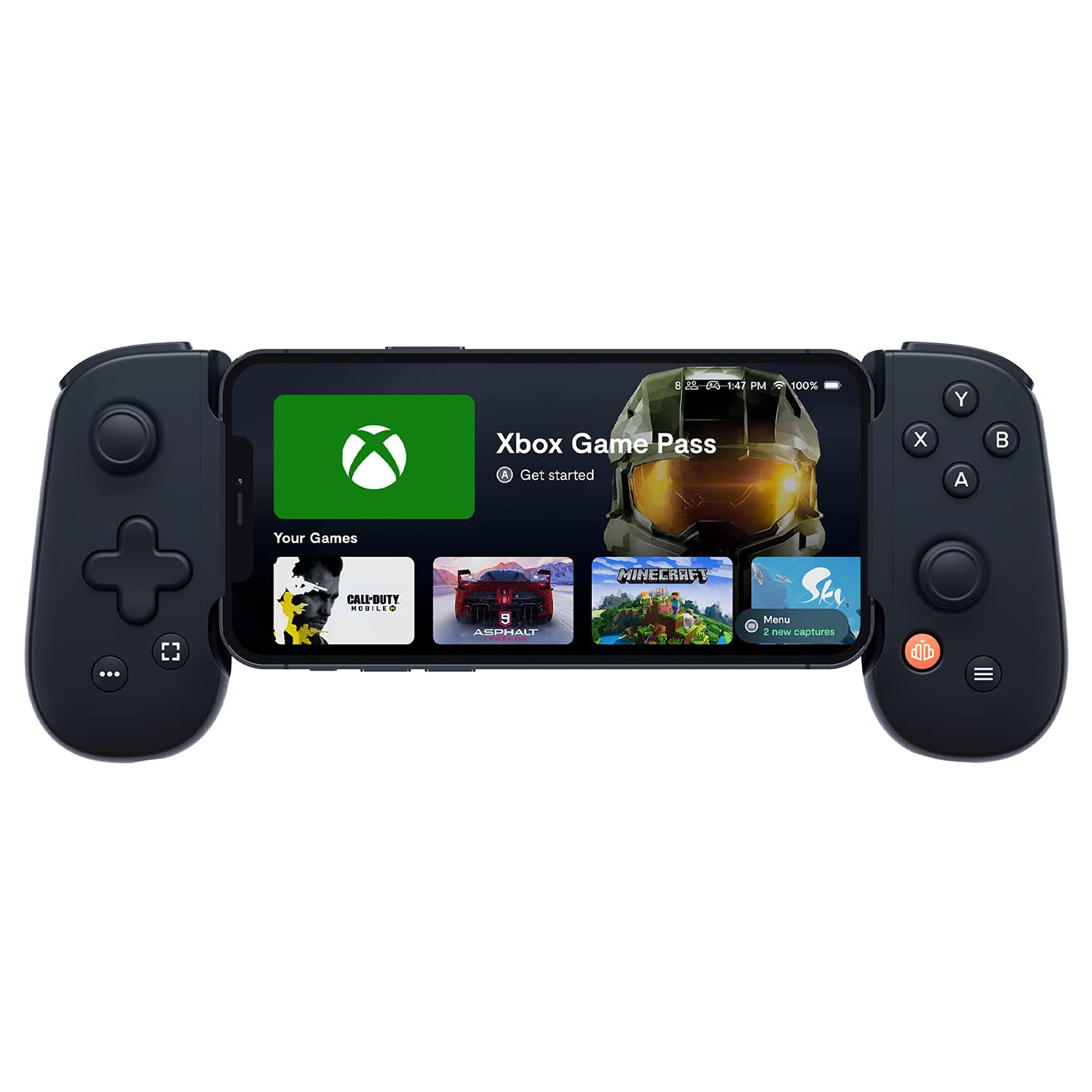
Remarkable 2
It’s no secret that I have ADHD. I tweeted about it a bunch back when that was a thing, but i’d like to give a bit of background on it first. I have been diagnosed since almost as long as I can remember. When I entered elementary school / kindergarten, teachers realized that I had a problem paying attention in class compared to the other kids. I wasn’t hyperactive though, but I had an incredibly hard time getting out of my own head for things that didn’t continuously and actively engage me. I was told I had ADD at the time, which has now been reclassified as ADHD-PI. I never took medication for it until high school / college, but still had trouble focusing in class. One idea both I and my teachers had simultaneously was to use my interests to my advantage. I loved computers so much, so maybe I should use them more than other students! Taking notes there, etc. This also helped solve my severe organizational issues concerning physical paper, as organizing digital files came to me so much more naturally than a folder of paper stuffed in my bag. This didn’t really work much until college, where I could use an iPad / Apple Pencil to create handwritten notes. Skipping ahead to my career, note taking is still incredibly important to me in meetings, but I found myself switching programs constantly, and typing never truly helped me remember the subject matter I was being exposed to. At first, the Kindle Scribe caught my eye, I use a Kindle to read a couple books a year, and having a paper tablet I could write on seemed awesome! However, upon receiving it and learning I couldn’t actually write on my books with the pen I became increasingly frustrated by its ultra limited note taking functionality and returned mine. Instead, I purchased a Remarkable 2, with pricier stylus and the official cover. My first thought was Amazon should be embarrassed that they released the Scribe to compete with this. The Remarkable 2 is a masterwork in mindful technology. It feels like paper. It writes like paper. Going back to my iPad Pro and Apple Pencil feels wrong now, like walking on an ice rink with sneakers. The way it writes, reads, how it synchronizes to my devices, works with my cloud documents, everything is almost perfect. I started using hyperpaper, a brilliant PDF planner program to organize my work tasks on my Remarkable 2. I started taking it exclusively into meetings at work. It has changed my life, I think. It’s by far the best digital notebook I have used in a literal lifetime of trying out digital notebooks, and I can’t recommend it enough.
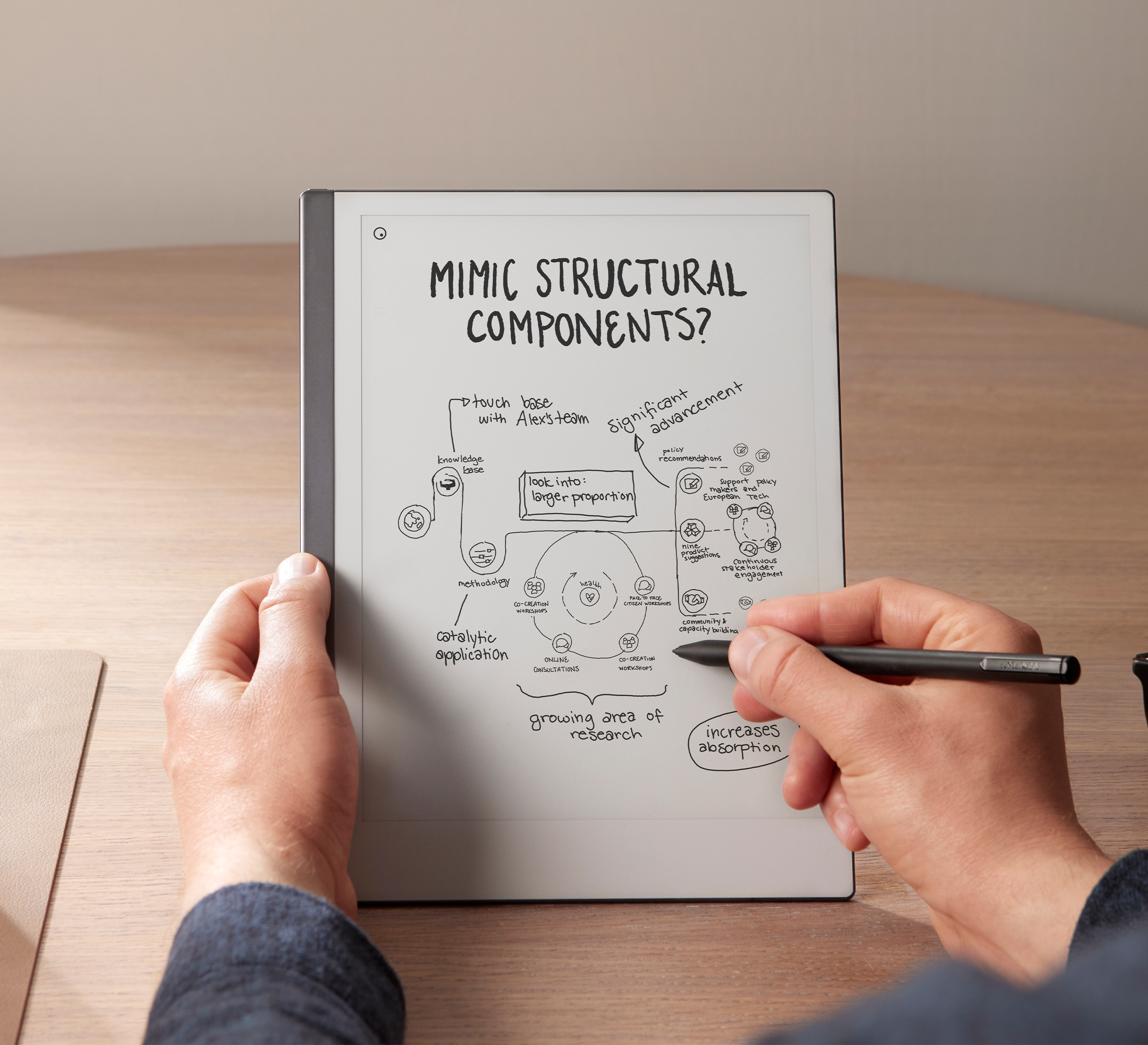
Making My Twitter Account Private
The fire within me that hates Elon Musk will never stop burning for as long as I live. Twitter was so important to me and my life. During the years I wasn’t in the tech industry, Twitter allowed me to reach out digitally to those who were. It broke me out of my lonely room in high school and allowed me to be a part of communities I desperately wanted to belong to. I met some of my best friends through Twitter. I founded a college club on it, co-founded blogs/youtube channels with the people I met on it, played Minecraft with them, made podcasts, etc. It was so important to me. It’s funny because now that I think about it, of the people who surround me in Seattle, I met the majority of them, or at least connected with them, through Twitter. What’s happened to that site has been catalogued enough, so it’s not even worth going through here, but I figured it might make sense for me to write about why I decided to cope with it in this specific way rather than deleting my account or abandoning it like everyone else.
Growing up with ADHD, as I previously mentioned, it also provided me with an outlet to just throw the thoughts I had into a space where people could hear them and respond to them! It allowed me to act a bit more “normal” in conversations, as I was using it as a sort of release valve for my thoughts - a way for me to “let out” the tangents I wanted to go on and engage that side of my brain which craved that type of conversation above all else. I found that while the website has become so much worse over the past year, it’s been hard for me to leave precisely because it provides that function for me still. This felt demoralizing, as none of the alternatives to it have truly panned out in the way I wanted them to yet, so I still needed that “space” to write my thoughts (at least, the short form ones). However, the new denizens of that platform - the holocaust deniers, the right-wing shitheads, the LessWrong users - aren’t people I wanted to find me. So I did one thing I never thought I would do when I created my account in late 2009: I made it private. I still need a place to post some thoughts and stay connected with whoever I know hasn’t left the platform yet, but I realized I do not want anyone else to discover me. I don’t want these assholes to see me, interact with me, read my posts, etc. Every once in a while, I feel like I am missing out not replying to a post in public but, honestly, I often find myself forgetting I am private now. It’s a much better experience than being public, at least on this new transformed platform I find myself stuck in. If you find yourself in the same position as I am, and you’re not required to be on there for work like many in the gaming/athletics spaces, I highly recommend you do the same. It’s the best way to wean yourself off the platform, and my screen time has decreased from hours a day in late 2022 to sheer minutes. One day, I hope the experience of old Twitter will be reborn again elsewhere, but until then, making my account private has been the best decision I’ve made since the Twitter I loved ceased to exist.
Arc (again)
More than a year into using Arc as my default browser I have found it unbelievably hard to go back to anything else. This is not because of lock in, or syncing, or Chromium over WebKit (I actually wish it was WebKit!) but because it has managed to provide a mental organizational framework for me to browse the web which removes the overhead of tab management entirely. I keep playing with spaces, folders, favorites, pins, and various organizational systems. We’re hearing murmurs that soon the long awaited Windows version is on the way, and I can’t wait to switch away from Edge fast enough. Same with Safari on my iPhone / iPad, whenever their redesigned mobile app gets built. They’re doing truly interesting things over there, and are to me one of the most exciting companies still building in the space.
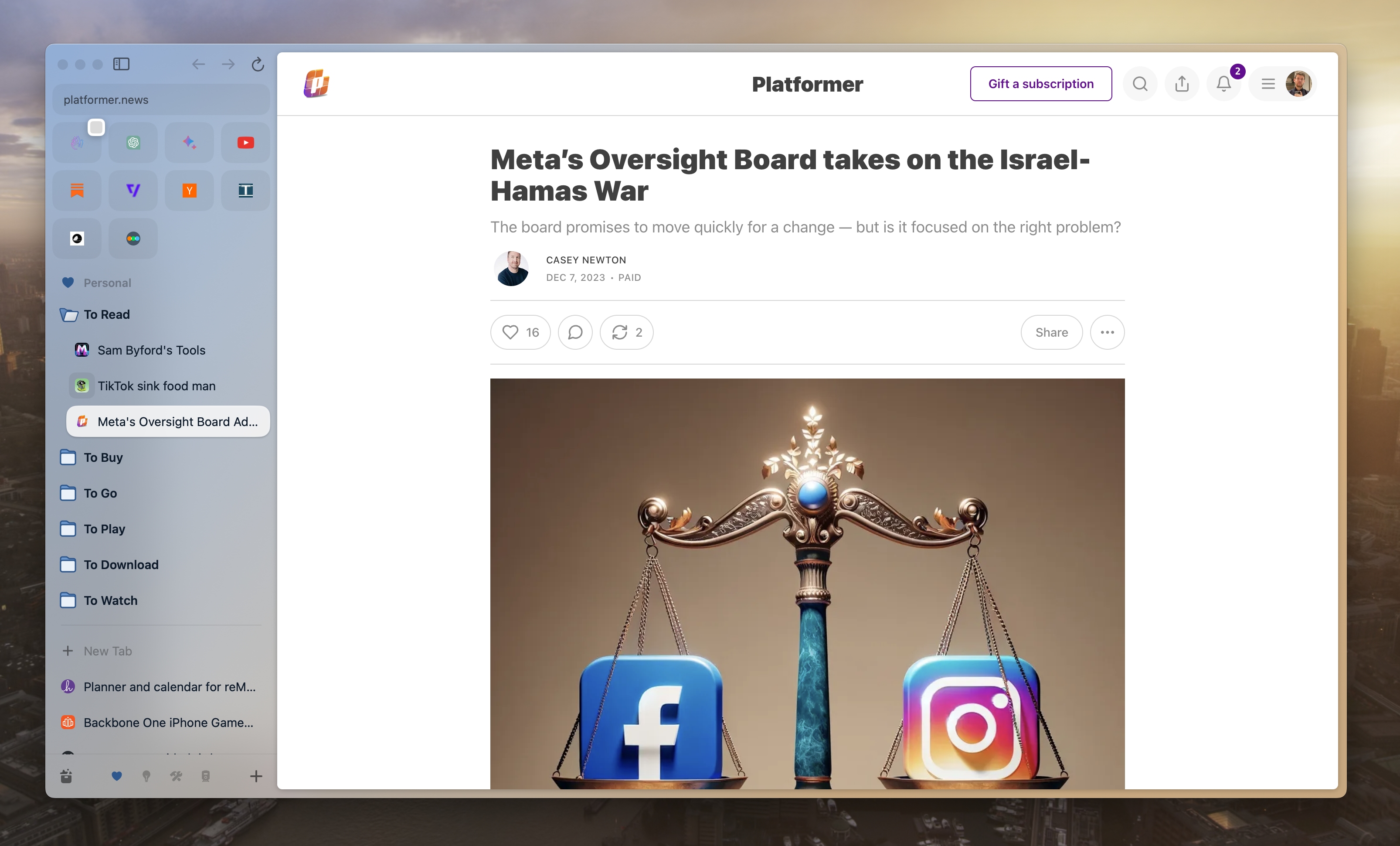
The PlayStation 5
The PlayStation 5 might be my favorite gaming console ever made. It’s wild to say this, as it has been releasing essentially enhanced PS4 games since the generation started, with the first system seller exclusive title being something I complained about a month ago, so I might have to edit my statement a bit. Playing games on my PS5 is the best experience I’ve had playing video games in recent memory. After the commercial struggles the PS3 underwent, Sony decided to market the PS4 as a pure gaming machine. The changes in the UX reflect this, gone was the XMB ui of the PS3 that sold it as a multimedia HTPC powerhouse, and in its place was a list of games in the chronological order you played them. That was it. The entire UX is a list of games in chronological order. This UI was so simple and brilliant that Nintendo copied it for the switch.
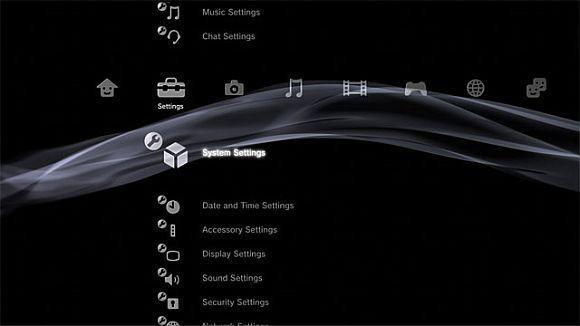
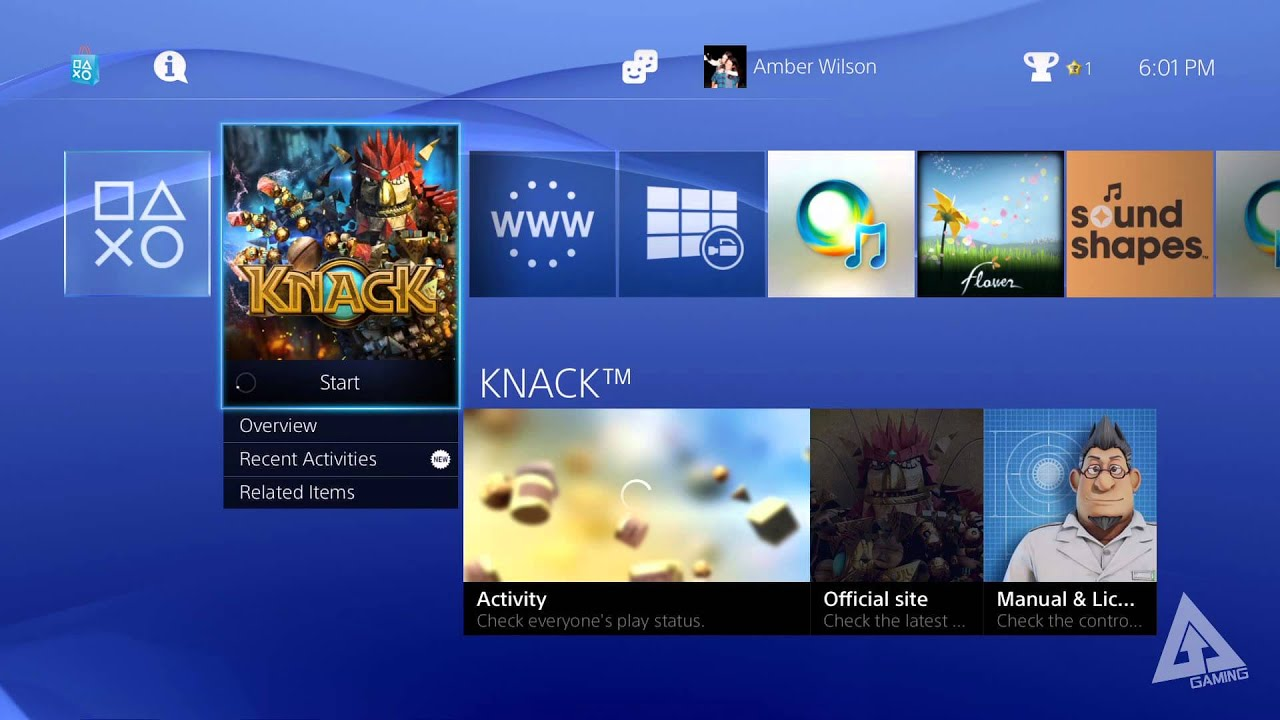
Despite this I still didn’t love the way the PS4 worked. For one, it was a single interface for everything. The Xbox / Steam had this concept of the “guide”, an interface which floated over your game and allowed you to access messages, join voice chats, see friends lists, and send invites. The PS4 slapped all this in the same home screen again, later introducing a guide which I found to personally be subpar. Personally, I never played multiplayer games over PSN for this reason alone, despite having many fun memories with Titanfall 1 and Halo 5 on my Xbox One.
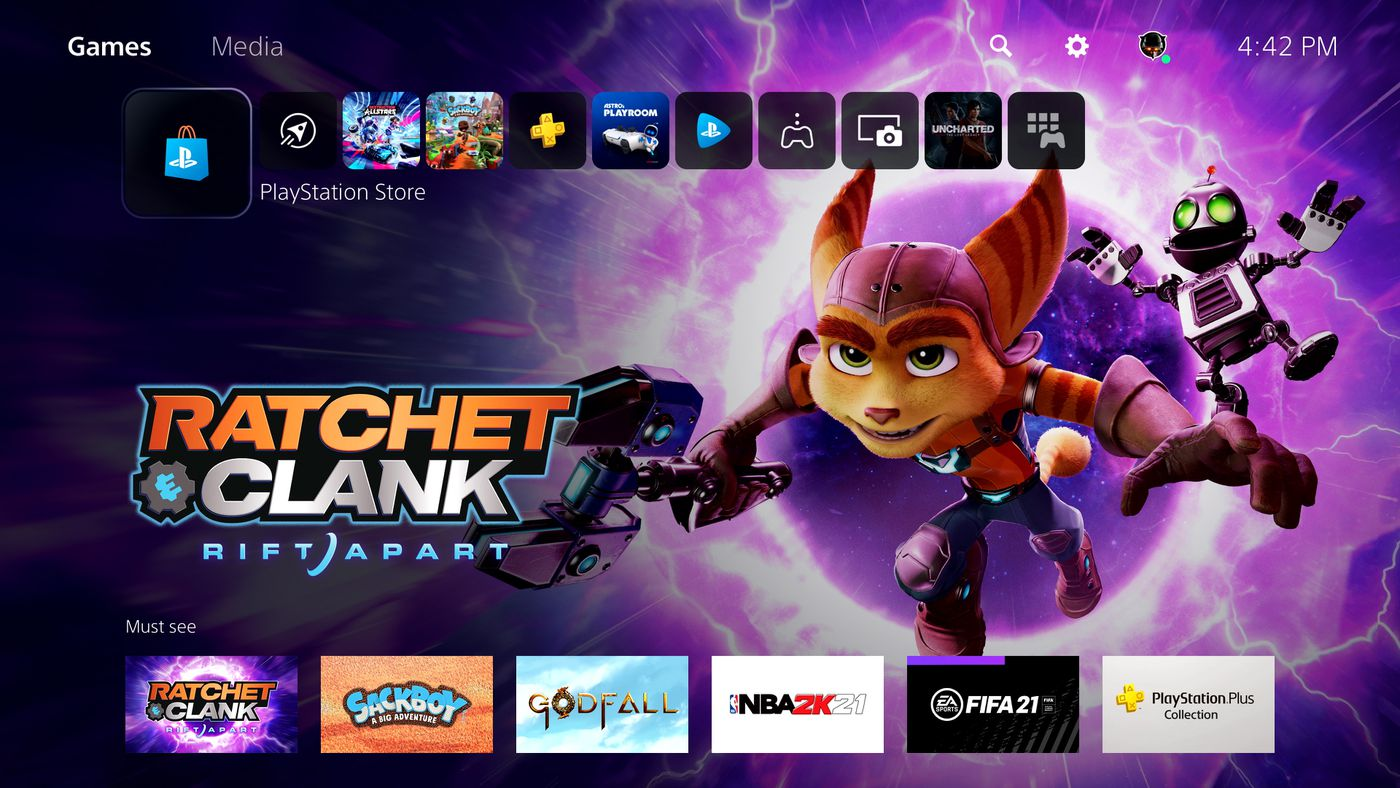
The PS5 has the best UI I have seen in a gaming console. Sure it has its issues here and there, but it combines the best of what worked from Xbox (the guide), the best of the PS4 (chronological list of games, beautiful animations and reliability), improves upon those things by splitting the media apps such as Spotify / Netflix out into their own little row, and adds genuinely useful features such as “game hints” which act as a integrated players guide, providing you hints on what to do next based on where you are in a game, showing you videos on the console and hiding spoilers of sections you haven’t played! I haven’t even mentioned the controller yet, the triggers giving you force feedback actually provides a genuinely new and improved experience vs older controllers and my computer. It actually makes me want to play games on my PS5 instead of my PC! A pretty alright tradeoff, considering my PC can barely run 120hz games on a RTX 2070 Super on an ultra wide screen, where my PS5 can push them in 120hz no problem. I hope Xbox takes some lessons from this in the future, as this has moved me further away from the PC ecosystem into something that is beautiful and simple. It just works, and most of the time, it works better!
ChatGPT for iPhone
Last but not least we have ChatGPT for iPhone. Earlier this year I wrote about LLM’s while sleep deprived on a 6 hour flight with an unhealthy amount of caffeine in my system. I threw out a lot of ideas in that post, almost none of them concise, but I think a couple stuck to the wall. The idea I was the most confident in was that this was all too expensive for most people, and it turns out, it was even too expensive for me! Paying for ChatGPT Plus, Perplexity, and Raycast Pro was stupid, so I decided to consolidate towards one subscription. That subscription turned out to be ChatGPT Plus, which I found provided the most utility for my monthly dollar. Is it worth 20 dollars a month? I can’t really decide that for you. However for me I have found it is. It’s reduced my dependence on Google a ton, something Kagi Search or DuckDuckGocouldn’t in the time I spend experimenting with them. I spent the year mostly giving OpenAI 20 dollars for a month, realizing that simply GPT4 alone was not worth that money, and cancelling days later. What changed my mind was a few announcements, all of which culminated around OpenAI Dev Day. First was voice chat, which would work with the new ChatGPT iPhone app they released in the summer. Second was web browsing, a feature which significantly reduces hallucinations (not eliminating them) by grounding it with web pages and Bing searches. Third was the multimodal chat, before you needed to select what version of GPT4 you wanted (Regular, browsing, data analysis, image generation, etc) in a really bad dropdown menu, and voice couldn’t work with any of them, but around Dev Day they fixed this and rolled it out to all GPT Plus users, and a day or two later the iPhone app. This meant I could use the voice chat and get actual information from the internet for which Siri was unreliable, such as whether a restaurant was open today, what happened with a certain news story, or whether this one weird behavior my cat was exhibiting meant I needed to take him to the vet (the answer was always no). The final thing which pushed me over the edge was… the Action Button on the iPhone 15 Pro. Turns out they replaced the sleep/wake switch on the iPhone with a button that you could set to do essentially anything you want, and many people have used it to start a ChatGPT voice chat! I’m one of those people. turns out having a digital assistant that’s actually capable of looking at the internet and answering questions when you hold a button on your iPhone is a useful feature! Who would have thought.
—
2023 was an odd year. I’m both hopeful and nervous about the future of our industry more than ever. There’s so much I didn’t cover here in this post, and probably won’t because I just finished my coffee and want to leave the coffee shop to check on my cat, finish my laundry, and play Persona. Ultimately, though, I think it might seem like a slow year if you are a product nerd like me, but with hindsight, I believe this year has the potential to be one of the most transformative years in tech since 2008. We just won’t really know if that happens, or even where that change truly is coming from, without the benefit of hindsight. For now, all I can really do is be amazed by the pace of development in this area that felt like science fiction as recently as last summer and push the changes as best I can in the direction I believe would be the most helpful to everyone. Or I could just play more Call of Duty on my phone. I’ll probably just do that instead.